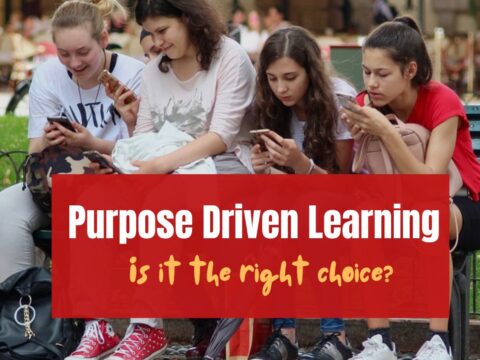 This is a hot topic with many of my teacher friends. Recently, I spent a wonderful hour chatting with efriend, Lindsey Hill (see her bio at the end) and found she had interesting ideas on game-based learning. I’ve been a fan of games in education since discovering Mission US (where students become actors in the American Revolution) and being schooled by students on the value of Minecraft. Lindsey shares my enthusiasm and took it a step further–facing head on the issues that are stopping teachers from using games in education. I think you’ll find her ideas fascinating:
This is a hot topic with many of my teacher friends. Recently, I spent a wonderful hour chatting with efriend, Lindsey Hill (see her bio at the end) and found she had interesting ideas on game-based learning. I’ve been a fan of games in education since discovering Mission US (where students become actors in the American Revolution) and being schooled by students on the value of Minecraft. Lindsey shares my enthusiasm and took it a step further–facing head on the issues that are stopping teachers from using games in education. I think you’ll find her ideas fascinating:
Teachers have many hurdles to jump to begin using digital learning in their classrooms. One thing, among many, that we know about teachers is they don’t give up easily. As a veteran teacher of 14 years and current lead for reading engagement initiatives at Evanced Solutions, I’ve had numerous discussions with educators on best practices for today’s tech-savvy kids. They want to try game-based learning, but it has been stigmatized as “mindless” fun. Critics of game-based learning are unaware that the touchscreen taps, mouse clicks and joystick jiggles can help sharpen cognitive skills.
Integrating the right kinds of games in the classroom helps kids have fun while simultaneously engaging in the process. Yet, teachers are often criticized for pushing more screen time on today’s techno-obsessed children. That’s why I suggest this simple “A.P.E.” principle to help combat four common myths about the use of e-games in the classroom.
A: Authentic Integration
P: Purpose-Driven Usability
E: Engagement
Myth #1: Game-based learning does not meet Common Core State Standards and is difficult to assess.
A: Authentically integrating games aligns the focused content with curriculum requirements and helps keep valid learning goals and lesson objectives in place. Additionally, most games allow a mastery-based approach of moving to the next level after students have excelled in previous levels, helping teachers assure student skill development. Based on student achievements, teachers can use performance reports within the games to incorporate intervention plans and provide immediate assessments.
Although technology is not overtly used in all classrooms yet, it is part of most. We’ve reached a point where Common Core goals partner well with the digital resources and become a fundamental component of meeting those standards.
Myth #2: Digital learning is expensive for large class sizes.
P: Purpose-driven usability of games allows teachers to personalize the learning environments of their classrooms. Teachers are bound to have a variety of students in each class, so it is easier to manage the students by placing them in small stations with one tablet or device per group. This way, multiple devices are not needed, which reduces the cost, and the use of digital learning in the classroom becomes more realistic.
Another option to cut down the expense of technology in the classroom is the “Bring Your Own Device” (BYOD) trend. This was a constant in my elementary classrooms, and I saw incredible results from the practice. When one particular student who struggled with reading received an e-reader during the holidays, she began to read frequently. Her favorite reading materials were immediately accessible. During the first semester of school, it took a lot of effort to get her to pick up reading material. After she brought her e-reader to class, it was a bittersweet struggle to get her put it down. BYOD allows students to bring their devices from home, so the school is not responsible for the funding of numerous gadgets.
Myth #3: Games are merely glorified worksheets.
E: Engagement from students occurs when their activities are directly tied to what they are most interested in or passionate about. Children want to learn more through what intrigues them, and, more often than not, games can make a “boring” lesson much more compelling.
Games promote critical thinking, problem solving skills and overall academic growth. While the popular Minecraft game is overtly touted as an educational tool worldwide, several other video games can unlock different cognitive skills, too. For example, a new study conducted at the Max Planck Institute for Human Development and Charité University Medicine St. Hedwig-Krankenhaus found that frequent game playing of Super Mario 64 results in a direct increase in the regions of the brain responsible for spatial orientation, memory formation, strategic planning and motor skills.
Myth #4: Gaming in the classroom is just a fad.
Despite the glamour and popular trends of gaming in the classroom, game-based learning for today’s digital learners is an essential part of a 21st century classroom. Students are engaged—and they will continue to be—when their teachers connect useful, familiar resources to the goals of the lesson.
A recent article on Edudemic shows why the use of new technology is key in today’s classrooms. The article titled 11 Reasons That Technology is a Key Part of Education states “Technology makes it easy for teachers to create visually engaging images that illustrate a key concept.” No design skills or further professional development needed—that’s music to a teacher’s ears.
By using the “A.P.E.” principle in association with games in the classroom, teachers can challenge myths that demote the benefits of game-based learning. With these myth-busting practices, today’s digital kids will benefit from e-gaming, appreciate classroom curriculum and thrive.
-###-
Lindsey Hill is a two-time Elementary Teacher of the Year honoree and veteran teacher of 14 years. As the lead for reading engagement initiatives at Evanced Solutions, LLC, she explores current trends in reading innovation to aid in the development of solutions that increase reading proficiencies among our youth. By spending time with parents, teachers, librarians and students in and out of elementary classrooms, Lindsey is able to demonstrate how kids can embrace their interests to learn and read proficiently.
More on games in education:
7 Education Trends You Don’t Want to Miss
Weekend Website #135: Samorost
15 Great Simulations to Gamify Your Class
Teach Digital Citizenship with … Minecraft
Jacqui Murray has been teaching K-18 technology for 30 years. She is the editor/author of over a hundred tech ed resources including a K-12 technology curriculum, K-8 keyboard curriculum, K-8 Digital Citizenship curriculum. She is an adjunct professor in tech ed, Master Teacher, webmaster for four blogs, an Amazon Vine Voice, CSTA presentation reviewer, freelance journalist on tech ed topics, contributor to NEA Today, and author of the tech thrillers, To Hunt a Sub and Twenty-four Days. You can find her resources at Structured Learning.




































